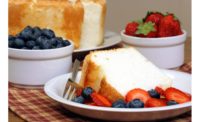The highly pathogenic avian influenza (HPAI) H5 outbreak in the U.S. has hit 20 U.S. states, with egg producers across Nebraska, North Dakota, Minnesota, Wisconsin, Iowa and Wisconsin severely impacted. HPAI H5 has resulted in the deaths of an estimated 35 million egg-laying hens, representing a loss of about 12 percent of the U.S. egg industry to date. (For more on the details surrounding avian influenza outbreak, see “Avian influenza’s impact on the bakery industry.”)
This has led to significant egg shortages, most notably the pasteurized egg products prized by bakers. “Any time 30 percent of a product’s supply is reduced, it’s a serious issue,” says Bill Gilbert, Certified Master Baker, principal food technologist, Cargill, Plymouth, MN.
“The worst outbreak of the avian influenza in U.S. history is causing widespread concerns about egg supply shortages and resultant price increases,” says David Whitmer, corporate director of quality, R&D and innovation, MGP Ingredients, Atchison, KS.
Keep in mind this dire situation has developed at an alarming rate—and is far from over.
“In the space of just a few weeks, the American bakery industry has seen supplies of all types of eggs reduced dramatically, resulting in shortages,” says John Gelley, U.S. sales manager, functional solutions, bakery, Arla Foods Ingredients, Basking Ridge, NJ. “Consequently, the price of eggs has been driven up and, during May alone, prices more than doubled. There’s no sign of relief in sight in terms of either supply levels or costs.”
The egg industry is seeking relief to this situation on a global scale, but there’s no quick fix. “The avian influenza epidemic will constrain the egg supply in the near term until the market equalizes, which will take time,” says Tasha Olson, director of food technology, Fiberstar, River Falls, WI.
In the wake of this supply-chain devastation, bakers, snack producers and other manufacturers are seeking ingredient solutions to keep businesses operational, with partial or complete egg replacement seeing strong interest.
“As a result of the avian influenza epidemic and subsequent egg shortage, we are seeing increasing levels of interest from the bakery industry in sourcing egg replacers,” says Sally Aaron, marketing director, Solazyme, AlgaVia Microalgae Food Ingredients, South San Francisco, CA. “There is an industry-wide demand for more cost-effective and sustainable alternatives to eggs.”
This issue supersedes all other agenda items. “The current No. 1 priority in the bakery sector is to reduce dependency on eggs, particularly shell eggs which have the shortest shelf life,” says Nicole Rees, business development manager, Glanbia Nutritionals Ingredient Technologies, Fitchburg, WI. “Even in the case of longer-life liquid and powdered eggs, we’re seeing bakery companies trialing egg reduction products in a move to find functional alternatives.”
For those supplying egg replacements, this is the new normal. “We are getting calls daily from the baking industry on egg replacers,” says Ricardo Rodriguez, marketing manager, bakery and confectionery, Ingredion Inc., Bridgewater, NJ. “Some companies will simply not be able to supply a product because of the cost unless they find a suitable egg replacer.”
The dynamics presented by the HPAI H5 outbreak are largely unprecedented. “The current situation is different from previous situations in that some bakers cannot even get their egg products,” says Jon Stratford, sales manager, Natural Products, Inc., Grinnell, IA. “It’s not simply high prices. There just aren’t enough eggs available. That being the case, I believe food makers are taking a more-fundamental look at their reliance upon egg products, and this is driving a larger strategic decision to find ways to reduce that reliance. Unfortunately, it’s difficult to act on a strategic decision like that very quickly.”
Logical first steps
Demand for solutions has been strong—and will continue. “We are experiencing a wave of requests for samples and information regarding our egg replacers,” says Stratford. “This time around, it seems that bakers are looking at every possible option for reducing or eliminating eggs. Some have initiated a broad series of trials to compare the various egg replacers in the market.”
Stratford suggests a calculated approach to reformulation, with bakers in partnership with suppliers. “Eggs are such a critical part of most sweet baked goods that any reduction of eggs will impact various aspects of the finished baked product,” he says. “It will take a commitment to a step-wise reformulation process in order to maintain the desired qualities in the finished product. The suppliers of egg replacers have the most experience doing formulation work with their own ingredients. They should be relied upon to help shorten the R&D time to getting a reformulated product to market.”
This process will require some quick benchtop experimentation. “We recommend a thorough project review and goal-setting before bench trials begin,” says Stratford. “The supplier and customer can review the product line together and develop a well-informed, prioritized list based on the applications in which success can be achieved most quickly. For example, if a bakery is making both chewy cookies and crème cakes, the cookies will be much easier to reformulate and realize a benefit for the company.”
Before running any trials, suppliers can help recommend a suitable starting ratio of replacement. “In some applications where whole dried eggs are being replaced, the replacement ratio may be 1:1,” says Stratford. “In applications where liquid eggs are being replaced, the ratio may be 4:1 water-to-solids, or even 5:1.”
Once starting points are set, Stratford recommends a four-stage process in reformulating and optimizing a reduced-egg or egg-free bakery product. “The first stage involves getting the total water rebalanced in the dough or batter,” he says. “Balancing the water is critical, because, like eggs, water affects just about every system in a baked product. If a dough or batter is starved for water, a host of quality differences will appear and discourage further R&D. Getting the water balanced will generally yield a promising base formula.”
Second, the process must address volume and structure, “during which the baker can utilize common troubleshooting methods and some best practices,” says Stratford. “Third, focus on mouthfeel and flavor. Fourth, we look at external appearance of the baked product. In general, this four-step process will help the baker determine the maximum amount of replacement for the application, while maintaining all the qualities in the original formula.”
Egg replacement tactics
In order to analyze how to effectively replace egg ingredients, it is helpful to understand egg composition and functionality. “An egg is made up of a combination of protein and other nutrients, including fats and carbohydrates,” says Aaron. “An egg’s most-significant functions include providing structure, binding, leavening and moisture. Egg whites tend to provide a lot of structuring, but the egg yolks contribute a lot of the emulsification properties. An effective egg replacer provides the necessary combination of macro- and micronutrients to mimic the different properties of an egg and deliver the functionalities of what an egg provides.”
Gilbert recommends solutions based on specific egg types to replace up to 50 percent of whole eggs, whites or yolks in any bakery product. “Because we understand the functionality of the egg type in all bakery products, we’ve designed solutions backed with formulas and analytical data to help bakers quickly validate in their unique products,” he says, noting his company has Certified Master Bakers and food scientists available to help customers validate, reducing the overall time and resources needed to achieve plant qualification.
One emulsifying starch product, notes Gilbert, can replace up to 50 percent of liquid or powdered whole eggs in most cookie, muffin and brownie products without any other adjustments to the formula. Another solution, a multifunctional stabilizer system, can replace up to 50 percent of liquid or powdered eggs in tricky products like angel food cakes.
Algae-based ingredients pose another option. Whole algal flour, a high-lipid powder, can efficiently replace or reduce egg yolks in many product formulations. “It is a whole-food ingredient that contains oil, fiber, protein, starch and micronutrients such as lutein and zeaxanthin,” says Aaron. “The oil component makes up 46 percent of the ingredient and has a profile similar to olive oil. Because of the combination of oil and macronutrients, whole algal flour is able to mimic many of the properties and functionalities of an egg.”
In many bakery formulations, whole algal flour can mimic the emulsification, full-body mouthfeel and moisture control of eggs, notes Aaron. “Each mechanism of action is the result of a component or combination of components of the ingredient’s whole-food structure,” she says. “The capability for emulsification is due to the phospholipids, and mono- and diglycerides, within the ingredient. The interaction of the oil, starches and fibers together provide a full, rich mouthfeel and textural experience. The moisture control capability is due to the presence of fibers, starches and polysaccharides in the ingredient.”
Aaron notes that while algal flour does not replace egg whites’ structuring functionality, it can replace egg yolks on a 1:1 basis. “For example, we replaced all the egg yolks with our whole algal flour in chocolate chip cookies and successfully maintained moisture control,” she says. Whole egg replacement is possible in products like challah bread.
Whey protein forms the basis of other replacers. “We have options available to match the different functionalities eggs provide in different products, including versions that mimic whole egg, egg yolk or egg white, as required,” says Gelley, in cakes, muffins, doughnuts, cookies, pastries and brownies. “They are tailor-made to each application to guarantee the best results possible.” He notes that the ingredients are always available in the volumes bakers need.
“To achieve a perfect mimic in terms of both flavor and texture, different ingredient combinations will be better suited to meet the requirements of different applications,” says Rees. “For example, in sponge cakes, where a good rise and a light crumb texture are traditionally achieved through aeration by whipping the batter, highly functional egg replacers will be needed to reach identical sensory properties. In products such as cookies and pancakes, a lower level of ingredient functionality will be required to replicate their texture.”
Rees notes a clean-label egg reduction approach based on whey protein works at a 1:1 inclusion rate for dried, whole eggs in applications like pancakes and waffles. “In cake applications, we are able to reduce and/or replace eggs with no additional formulation changes.” Various products in the line are suited to different applications, including muffins and cakes, used at a 1:1 usage to the egg solids in the formula. “No special handling or mixing adjustment is necessary.” Natural flavor systems can help products retain the distinctive egg taste typical in applications like pound and sponge cakes.
“There are plenty of egg replacers available to bakers currently,” says Rodriguez. “The key is for bakers to understand the limitations of the replacers and not to expect 100 percent replacement in all applications. In some cases, in order to maintain the same volume and texture—let’s say in a cake—a baker may only be able to substitute 50 percent of the egg. In order to save the baker’s time and money, it’s important that they communicate with their suppliers to understand the limitations of the product and what work has already been done.”
Rodriguez notes that his company offers “one piece” systems that completely mimic the functionality of eggs. Tests have included 25 percent replacement of egg whites in an angel food cake, 50 percent of whole eggs in a muffin, and 100 percent of whole eggs in waffles.
Wheat is a natural choice for baked goods. Depending on the application, notes Whitmer, bakers can select from various specialty proteins, including hydrolyzed wheat protein and wheat protein isolates, as well as some wheat starches, to replace the functionality of egg whites, including bonding, foaming and gelling. “Replacement levels are typically up to 50 percent of egg whites in a formulation,” he says. “However, for some applications the replacement level can be 100 percent.”
Olson suggests citrus-fiber solutions to replace egg products in muffins, cookies and cakes. The ingredients provide structure, emulsification, stabilization and moisture retention. “Depending on the bakery application, egg replacement levels can be up to 40 percent replacement with no change in product quality,” she says. “This is due to the patented manufacturing process, which opens up the citrus-fiber structure to create more surface area for water and oil binding.” Depending on the application, starches and/or gums might yield synergistic improvements, including in gluten?free baked products.
Bigger challenges
Throughout the history of baking, eggs have been go-to ingredients due to their multifunctional properties. “Egg replacers will never be able to completely mimic every functional property of eggs,” says Stratford, noting that his company’s egg replacers function best in applications where liquid eggs comprise 10 percent or less of the total formula, or where powdered eggs comprise 2.5 percent or less of the total formula.
“In many cakes, liquid eggs can be as much as 25 percent of the total formula, as in a traditional pound cake,” says Stratford. “In such applications, eggs are contributing their widest range of functionality, including color, flavor, elasticity, coagulation and even leavening. Such applications pose a great challenge for reduction of eggs.” The replacers can improve emulsification, water absorption and structure in cookies, pancakes, waffles, brownies, muffins, sweet rolls, cake doughnuts and even some crème cakes, he notes.
“Development of such applications may require slight adjustment to some of the other ingredients in the formula,” says Stratford. “In applications where eggs are a higher total percent, it will require much more drastic changes to the formula, including the addition of other ingredients.”
Some applications might require more adjustments that others, as formulas differ so much throughout the industry, says Gilbert. “There is no one-size-fits-all solution,” he adds.
Bakery products that rely on eggs for structure, including leavening via entrapped air, will pose the greatest challenges, says Amanda Wagner, food technologist, Fiberstar. “Examples of such bakery products include angel food cakes, pound cakes and sponge cakes. Bakers often work with various starches, fibers and gums to help replace a portion of the egg component in these products without compromising full egg characteristics.”
Bakers need to understand product-specific limitations, notes Rodriguez. For instance, a replacement system might effectively substitute for up to 50 percent of the egg in an angel food cake, “but once you go beyond that,” he says, “the baker will need to decide if they can live with the difference in volume.”
For applications that require a whipped component, such as meringues, Gelley recommends lower replacement levels. He notes technical expertise to help customers test replacers in product formulas, and implement them in the customers’ facility, is available.
Bottom-line boosts and other benefits
Olson notes that citrus-fiber egg replacements provided cost savings before the HPAI H5 epidemic due to the cost?in?use of the ingredients, which are combined with water. Now those costs savings are much more significant. “These products not only buffer the cost escalation, but also minimize supply issues,” she says.
Stratford notes that before the crisis began, his company’s egg replacers were running about 50 percent to 75 percent less than the cost of whole egg powder, noting that vegetable-based egg replacers have historically seen very stable pricing.
“Prior to the crisis, our solutions benefited customers by providing up to 44 percent cost savings,” says Gilbert. “With egg prices increasing, and supply depleting, we understand ingredient deck changes may be necessary and suggest instigating these changes will mitigate future risk.”
In addition to mitigating cost issues, egg replacements can also sometimes improve upon the functionality of eggs in select applications. For instance, Olson notes that citrus-fiber replacements can help improve the quality of some baked goods throughout shelf life.
In some cases, notes Gelley, whey-protein-based egg replacement ingredients can yield product characteristics preferable to those made with eggs—particularly in cakes, which stay moist and resilient, he notes, with a more-elastic crumb structure. “Our whey protein egg replacers are easy to use in production, with no pre-blending or cooling required,” he says. “They also offer a longer microbiological shelf life than eggs—up to 18 months stored at room temperature. Refrigeration is not required, which is an important advantage over both liquid and powdered eggs, because it reduces waste.”
Gelley notes that the egg replacers were already more-economical than eggs. “Until recently, bakers using them could save on average 20 percent,” he says. “But right now, that number is far higher.”
Some egg replacers present an opportunity to cut use levels of other ingredients in the formula. “For example, when you use an ingredient like whole algal flour, you also might be able to reduce reliance on oil or reduce usage of butter,” says Aaron. She notes the flour can boost the nutritional profile. “For example, when replacing all the eggs with whole algal flour in challah bread, the total fat of the product is reduced by 63 percent, the calories are reduced by 20 percent, and the saturated fat and cholesterol are reduced by 100 percent.”
Rees notes that the functionality of whey-protein egg replacers helps bakers remove other ingredients, such as milk proteins or soy flours, from the formula.
Whitmer suggests that wheat-based egg replacers are ideal for bakery applications, providing multiple functional and processing benefits, including reduced dough mix time, improved dough extensibility and machinability, and increased bread volume and crumb firmness.
Every formula—even the most reliable—can benefit from some fine-toothed scrutiny from time to time. While the current imposed analysis underway at bakeries across the nation comes in the wake of ongoing tragic and tumultuous events, perhaps it will reveal a silver lining for some bakers, snack producers and other manufacturers in terms of cost and operational efficiencies and product quality, moving forward.





